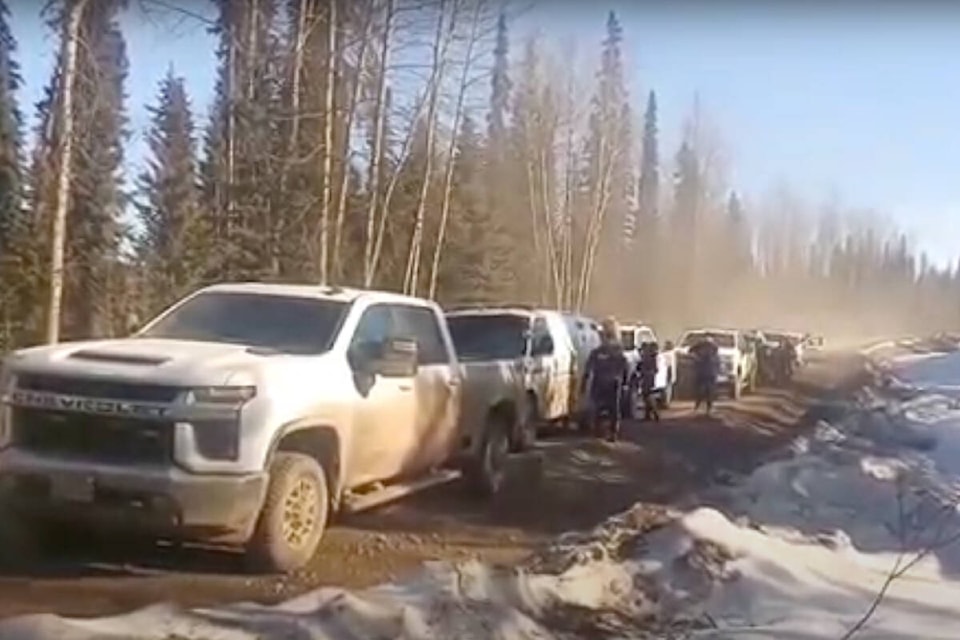Conflict over the Coastal GasLink pipeline near Houston has resulted in further arrests.
Following an incident in which a pipeline employee was allegedly swarmed on March 26 by a group of masked individuals wearing camouflage at the 43-km mark of the Morice West Forest Service Road, the RCMP obtained two search warrants related to theft under $5,000.
It’s alleged that during the incident, the group gained access to a Coastal GasLink company vehicle, poured some sort of liquid over it and stole a chainsaw from the truck bed.
During the execution of one of the police warrants on March 29, at a camp known as the Gidimt’en village site at the 44.5 kilometre point on the road, police say four occupants refused to cooperate and another attempted to prevent officers from executing the warrant.
All five were arrested under accusations of obstructing a peace officer.
Harrassment and intimidation: Gidimt’en
In a statement on the Yintah Access website, the group said a large force from the RCMP’s Community-Industry Response Group (C-IRG) raided the village site arresting mostly Indigenous women, including Gidimt’en Chief Woos’ daughter.
Sleydo’ (also known as Molly Wickham), a spokesperson for Gidimt’en checkpoint, said the alleged incident is merely an excuse for further harassment.
“This harassment and intimidation is exactly the kind of violence designed to drive us from our homelands,” she said. “The constant threat of violence and criminalization for merely existing on our own lands must have been what our ancestors felt when Indian agents and RCMP were burning us out of our homes as late as the [19]50s in our area. The colonial project continues at the hands of industry’s private mercenaries – C-IRG.”
Police specialized force under scrutiny
This month, the C-IRG, which was established in 2017 “to provide a coordinated response to public order events related to large-scale resource-based industrial projects in British Columbia,” has garnered a lot of public attention in northwest B.C.
On March 9, chair of the Civilian Review and Complaints Commission for the RCMP Michelaine Lahaie initiated a systemic review of the unit, which local First Nations refer to as a “militarized squadron” of the RCMP.
A CRCC release said the review will examine whether the C-IRG’s policies, procedures, guidelines and training are consistent with the Canadian Charter of Rights and Freedoms and reflect previous relevant CRCC recommendations and other good/leading practices.
It will also seek to determine if the C-IRG’s operations and actions are consistent with B.C.’s Declaration on the Rights of Indigenous Peoples Act and the calls for justice from the Missing and Murdered Indigenous Women and Girls Inquiry.
Also on March 9, the neighbouring First Nation Gitxsan a issued a ban of the C-IRG from its traditional territories.
Subsequently, the RCMP said while they would do everything they can to respect the ban, they have obligations and responsibilities to enforce court injunctions and maintain public safety, tasks for which the C-IRG unit is “uniquely situated” because of specific training and resources.
READ MORE: Chiefs ban RCMP’s ‘militarized squadron’ from Gitxsan lands
RELATED: RCMP do not agree to abide by Gitxsan chiefs’ ban on ‘militarized squadron’
editor@interior-news.com
Like us on Facebook and follow us on Twitter
